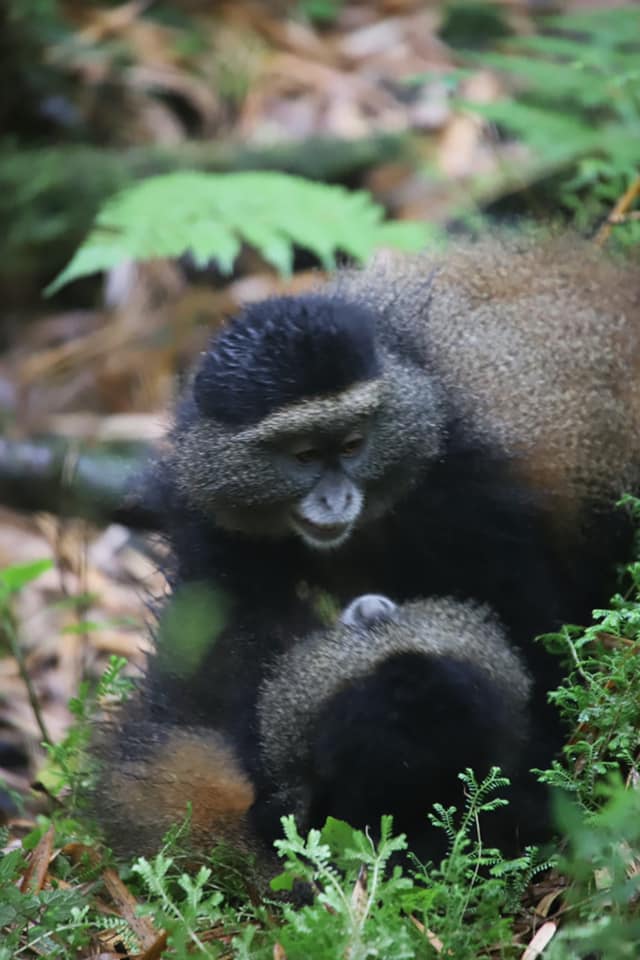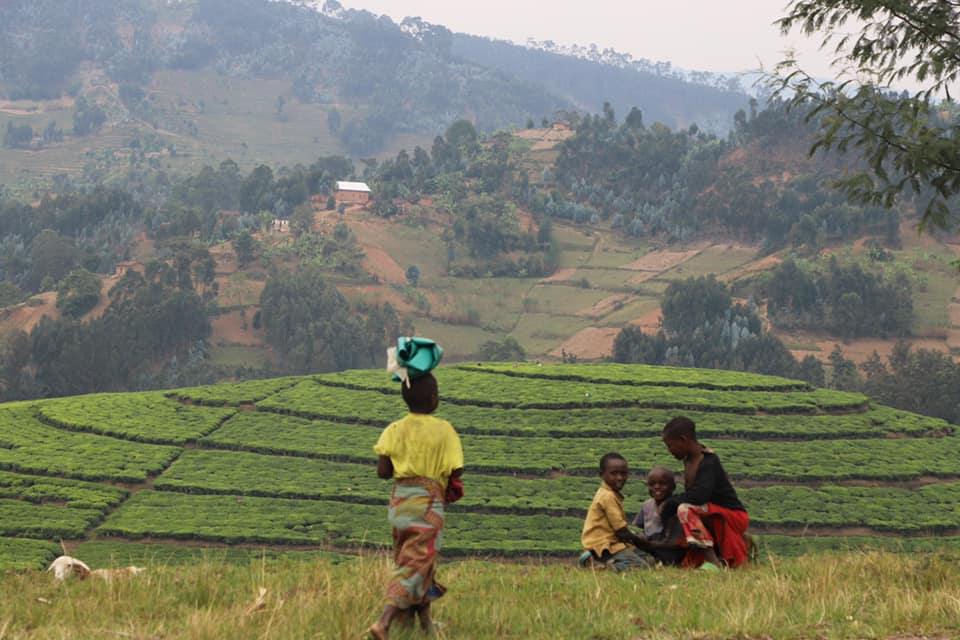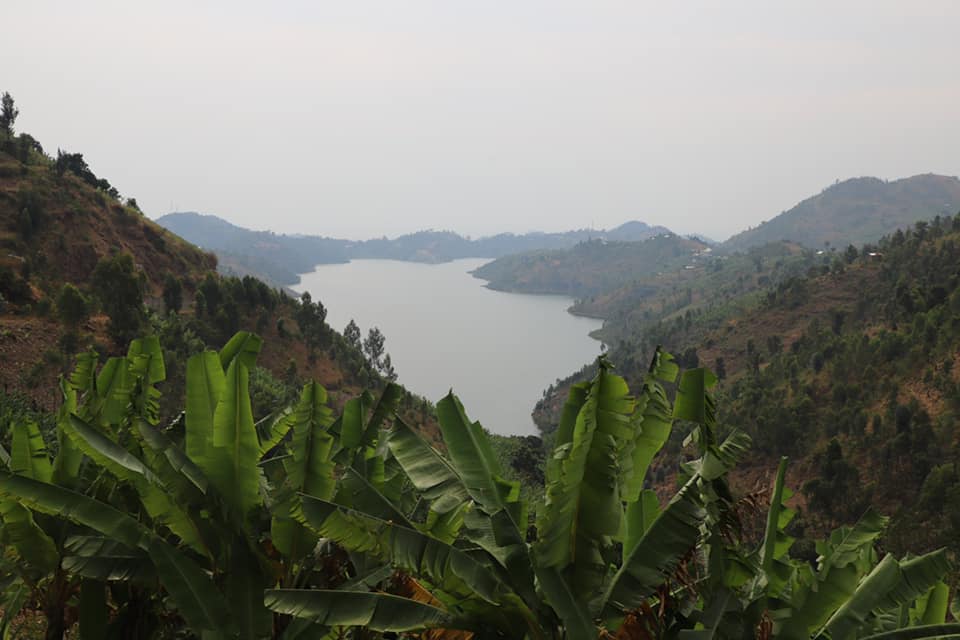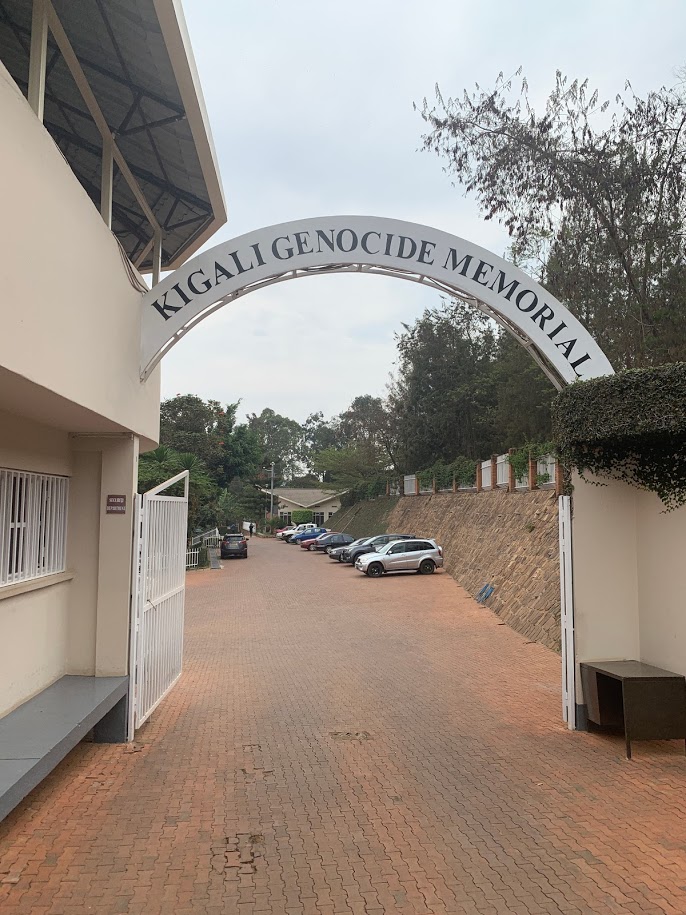Rwanda was next on our list to visit before the pandemic hit. It was one of the countries we were looking forward to visiting the most as in our opinion it is the most inspirational country in Africa. President Paul Kagame is seen as a benevolent dictator who has put the country on a road to recovery since the genocide (more on that later). The first ‘Made in Africa’ phone comes from Rwanda, half of its cabinet are women and plastic bags have been banned since 2008. Even our taxi driver from the airport was telling us other African countries exchange jokes about whether they can ‘borrow’ Kagame for a year in their country which we think says a lot about Rwanda.
It is also one of the best destinations in the world to see gorillas in their natural habitat. We had hoped to see the gorillas in the Democratic Republic of Congo but was too dangerous now. Rwanda in the past 20 years had done a lot around the conservation of gorillas.

It holds an annual gorilla naming event each year known as ‘Kwita Izina’ a function that has attracted renowned figures from across the world. Ahead of the naming ceremony there are various activities organised for a whole week to celebrate the importance of the conversation and the role of tourism in protecting rate and iconic species. As a result over the last 30 years the number of mountain gorillas has risen from 204 to 604. This is such a great success story considering gorillas are critically endangered.
Route over 7 Days
We spent a week in Rwanda. On the first day we spent half a day in quarantine. Rwanda is receiving guests from all countries in the world but you must bring a negative PCR test result and do another test after arrival from a selected list of hotels. Until you receive the result, you need to wait in your hotel room. We arrived at midnight had our test there and got our result by mid morning and found it a very efficient process after receiving a negative result in less than 10 hours. It meant our quarantine was over and we were free to leave the room and explore Rwanda. The places we planned to visit were the Volcanoes National Park, Gisenyi on the coast of Lake Kivu, the Nyungwe National Park in the south plus the capital Kigali. Rwanda is a very small country and never takes more than five hours to get from one place to another so was easy to see the main attractions in a week. One attraction we saved until next time was Akagera National Park in the east. Reason being the Rwandan government decided that all tours must start with gorilla tracking. This is a precautionary measure so that only recently tested humans get close to the gorillas.
It began with the Agashya Gorilla Family
Seeing the gorillas in the wildhad been top of our bucket list. We arrived at Volcanoes National Park at 7am for the briefing. Volcanoes National Park has 10 habituated gorilla families and the park sells a maximum of 80 permits per day. This means that no more than 8 people can visit a gorilla family each day. Usually the hike takes between 30 minutes and six hours. Since only two other tourists were in our group we had asked to go on the furthest hike but that would not go to plan as you will find out.


At the start our guide told us we would be seeing the Agashya family comprised of 23 gorillas including 3 silverbacks. The hike is over fields and partly muddy ground in the forest. We arrived during dry season but our guide said during wet season it can take six hours before seeing your first gorilla sighting. After anticipating a long hike after 45 minutes we met the trackers, who locate the gorillas and are in radio contact with the guides.
The tracker said the gorillas were about 25 meters away from us. We left our bags at the gate and fought our way through dense bushes until we finally saw a glimpse their black fur. It would be the start of one hour of pure magic with the gorillas.


At times it was challenging as they were in the dense bushes so would sometimes crawl on our hands and knees to see them. The hour flew by and would liked to have stayed longer as it was amazing especially at the end as baby gorilla kept coming out to say hello to us. It was a pity we did not get to see the gorillas in an open space as most of the time we were all crouched down on the floor. Apart from that it’s something we would definitely do again as its such a special experience seeing the gorillas with their human like features in face, hands and feet. After all, human shares 99.9% of their DNA with gorillas.

Another activity we did nearby the Volcanoes National Park was a canoe trip down the Mukungwa river.

We met our guide and spent the afternoon floating past fields at the foothills of Volcanoes National Park. He chatted about Rwandan culture and traditions around ‘Umuganda’, a community clean up held on the last Saturday of every month. It was once a government policy but has now become part of culture where once a month Rwandans gather to clean up the streets. It is one reason for why Rwanda is renowned in Africa for its cleanliness. It was such a fun canoe ride and along the river we would always meet groups of young kids who would see us and instantly jump into the river asking for a lift from us. It was reminiscent of the scene from Game of Thrones where the stone men were appearing from all sides trying to jump in Tyrions boat.
Next the Golden Monkeys
The next day we would return to Volcanoes National Park to see the golden monkeys. The golden monkeys live only in this region of the world and were a lot easier to find than the gorillas as they prefer lower altitudes. It is a walk through a bamboo forest and within 20 minutes we found a large family of around 100 members. They were everywhere on the trees, ground and visibility was better as they were in an open space.


Seeing the golden monkeys exceeded my expectations as we had such a good sighting. They were running around everywhere and as a bonus, we managed to get relatively close to them.

This activity was great and would recommend to anyone to combine gorilla trekking with seeing the golden monkeys.
And then came the chimpanzees
To see the chimpanzees we travelled south to Nyungwe National Park. The drive takes six hours from Volcanoes National Park. It is one of the most scenic drives we have done this trip as it is along Lake Kivu.



Nyungwe National Park is partly located in neighbouring Burundi and a lot of the perpetrators of the Rwandan genocide fled to Burundi. As a result there is a heavily armed presence every 100 metres and our guide told us the Rwandan government is using drowns to locate these perpetrators in the forest to this day and bring them to justice.
We booked two permits to see the small primates and chimpanzees. In both the tracking activities for the primates and chimpanzees you are accompanied by a ranger who takes you through the forest. We started with the chimpanzee trekking it was a relaxed hike and the ranger tried to track the chimpanzees but was having no luck. The large chimpanzee family is based in part of the park on the border with Democratic Republic of Congo still in lockdown due to coronavirus so we were searching for the rarer group of chimpanzees. We did manage to see all of the primates on the day of our chimpanzee trek including the olive baboon, white colobus monkeys, d’hoest’s monkeys and velvet monkeys so decided to try and switch our primate permit to the chimpanzee permit for the next day.

After our relaxed hike trying to find the chimpanzees the previous day, we could not prepare ourselves for what came next on the second day. We met our ranger and from our disappointment the last day had arrived early to track the chimpanzees in the morning. She led the way and we launched down into the depths of the forest, often falling over in our group many times. This must be one of the most intense hikes of the trip. We kept hearing their calls and kept thinking we were close and when we finally got there we saw the chimpanzees in the trees. It wasn’t the best sighting as there was probably 100 metres separating us and them. Maybe we were too spoiled with our sightings of the gorillas and golden monkeys. Seeing the chimpanzees from so far away was not as good as I expected especially after the most exhausting hike. However it was not a wasted day as it meant we had now seen all four great apes in the wild.

Kigali
It was then time to head back to Kigali. It is like the rest of the country built around hills and most places are a short car journey away. What surprised us the most is the cleanliness and how orderly everything was and had its place. We had just travelled from Nairobi so the difference was enormous. The sad truth is that it was not always like that here.
Rwanda has a tragic past. In 1994 about one million people were murdered within 100 days, which was one eighth of the country’s population at the time. Tensions between different ethnic groups led to radical Hutus wanting to erase the Tutsi minority (Belgian colonial powers had categorised the Rwandans into these ethnic group on ID cards only a few decades earlier.).In a cruel and barbaric way, a genocide followed that went down in history as one of the worst of the 20th century.

We visited the genocide memorial in Kigali. The visit around the memorial last about two hours and takes you through the history of what happened in Rwanda during 1994, especially shocking is the last room dedicated to the murdered children. It was shocking to read about how the world community completely failed and let the genocide happen without action. It is important that such museum exists so we never forget the victims.
We then made our way to complete our second covid test for Rwanda as you need one to leave the country before our next stop, Tanzania.